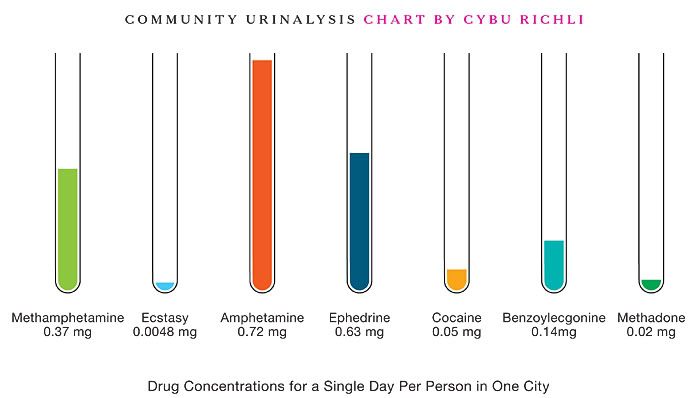
The New York Times Magazine reports:
Everyone knows how a drug test works: You urinate into a cup and your employer (or prospective employer) has the sample tested to see if you’ve been using any illegal substances. This year, though, Jennifer Field, an environmental chemist at Oregon State University, experimented with an unusual variation on this process. She found out what illicit drugs the population of an entire city was ingesting.
How? By collecting and then testing water from the city’s sewage-treatment plant. Since all drug users urinate, and since the urine eventually winds up in the sewers, Field and her fellow researchers figured that sewer water would contain traces of whatever drugs the citizens were using.
Sure enough, when Field’s team tested a mere teaspoonful of water from a sewage plant — which it ultimately did in many American cities — the sample revealed the presence of 11 different drugs, including cocaine and methamphetamine.
The research team called this technique community urinalysis. From a privacy standpoint, it’s a very clever approach to monitoring drug usage, because while it is involuntary — drug users can’t help urinating — it also manages to preserve the public’s anonymity. “It’s the closest to the urinal you can get without violating privacy,” says Field, who presented her findings at an August meeting of the American Chemical Society.
Because it allows for sampling on a daily basis, community urinalysis can track a drug epidemic in real time, showing the police and doctors how the popularity of a particular drug is waxing or waning. For instance, Field says that the use of methamphetamine was constant from day to day — because “once you’re hooked, you’re hooked” — whereas the usage of cocaine sometimes peaked on weekends.
One affluent community that Field tested showed very few drugs except cocaine; by contrast, methamphetamine levels varied widely from city to city. And the single most popular drug? Caffeine.

No comments:
Post a Comment